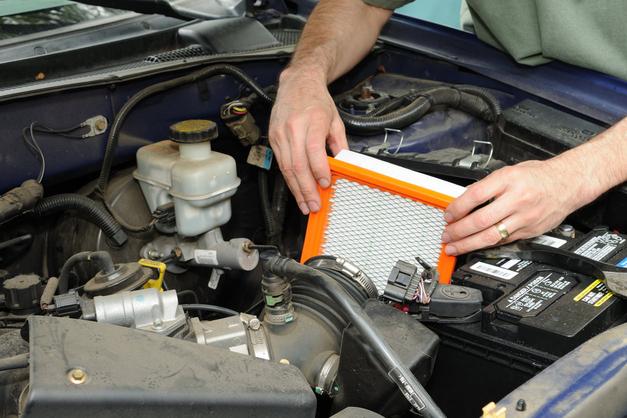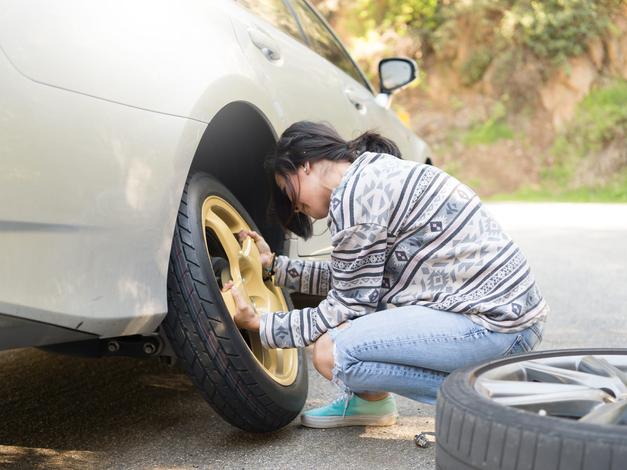
Changing a car battery at home is an easy way to save cash on car maintenance.
You can buy your new battery anywhere, including online, and install it yourself instead of paying high garage or service center prices. Car batteries typically cost between $50 and $200 depending on your vehicle. Once you have the battery, the process typically take 30 minutes to complete.
To help you get the job done safely, we spoke to Richard Jano, Sr., owner of Meineke Auto Repair in Cathedral City, CA, about the best way to change a car battery.
When your car won't start, there are several electrical issues that could be the problem. Jumpstarting the car can give you enough charge to get you where you need to go, but it can also mask electrical problems that drain your battery, regardless if it's old or new.
You need to test the battery before replacing it. There are other causes of a no-start or a dead battery, including problems with the alternator, a short circuit or other electrical issue. If these are not addressed, the new battery will run down and the car will not start again.
In general, car batteries typically last about 3 to 4 years. Factors like heat, heavy use, and unsecured battery hold-downs can all impact how long a battery lasts.
Signs of bad battery include:
An inexpensive electronic device called a multimeter can be used to measure the voltage of the battery. This can help determine whether it needs replacement.
For a professional opinion, Jano suggests taking your car (or the battery) to a mechanic or to most auto parts stores. They can easily test the battery and tell you if it needs replacing even if it's still starting your car. If you take your car, they can easily test the alternator and charging system to confirm whether the battery needs replacement.
Put the car in park, turn it off, and remove the key. Before you locate the battery, make sure the engine has cooled down. Most car batteries are in the front, mounted on a plastic or metal tray, under the hood. Some cars have the battery in the trunk.

Batteries have two terminals where the cables are connected. They may be covered by plastic covers. There will be a black one (negative) and a red one (positive). The terminals may also be marked with + for positive and - for negative.
Always disconnect the negative cable first. Wearing work gloves and eye protection and using a wrench, loosen the bolt that tightens the negative connector to the battery terminal. Once loose, gently twist the cable connector back and forth as you lift it up to remove it from the battery terminal.
Next, remove the positive cable. Using the wrench, loosen the bolt that tightens the cable to the battery terminal. Once loose, gently twist the cable connector back and forth as you lift it up to remove it.
Car batteries are secured with a metal bar over them or a metal clamp at the base. Loosen the bolt that secures the holding bar or clamp so you can remove it and lift the battery out of the car. Batteries have caustic liquid inside, so be sure to always keep it upright.
Terminal connectors corrode over time, and now is a great opportunity to give them a thorough cleaning.
Using battery cleaner and a wire brush, clean the connectors and the battery tray. Alternatively, you can use a baking soda paste by mixing two tablespoons of baking soda with a teaspoon of water. Use steel wool to clean inside the connectors then thoroughly dry everything.
Inspect the cables and connectors to ensure they are not damaged or frayed.
Double-check to make sure that the position of the new battery matches the red and black terminals. Lower the new battery into the car and onto the mounting shelf. Re-attach the clamp or hold-down bar and tighten the bolt to secure it.
Before reconnecting the terminals, consider using protective felt washers or some battery anti-corrosive protection gel on both terminals.
Always connect the positive cable to a new battery first. Be sure the connector is pushed all the way down on the terminal. Tighten the bolt. Repeat the same steps for the negative connector to the negative terminal.
New car batteries normally come charged and are ready to go right away.
If you change a car battery yourself, remember that they cannot be thrown away in ordinary trash. Jano says the old battery is typically returned to the seller of the new battery, as sometimes a refundable core fee is charged.
In most states, any retailer who sells new batteries is required to accept used ones for recycling. Check with your local auto parts store. Place the old battery in several trash bags and be sure to always keep it upright. Do not keep it, batteries emit toxic gasses and can leak. Properly dispose of it as soon as possible.
Changing your car battery yourself is an easy way to save money on car maintenance. Be sure to properly test the battery to make sure it needs replacing. Remove the negative connector first, then the positive connector from the old battery and remove it. Install the new battery then connect the positive connector first and finally the negative connector last. Dispose of the old battery properly at an auto parts store or recycling center.
However, a loose battery or loose electrical connections can be very dangerous. If you're not comfortable doing any part of this process, most auto parts stores will install batteries you buy there for free. AAA also sells batteries and will install them and take away the old one at no charge.
Freddy ShermanPalm Springs-based automotive writer and gearhead Freddy Sherman can usually be found in his garage, tinkering with his 1968 Pontiac Firebird. When he's not cruising in the Firebird, he can be found driving one of the more than 50 new cars (and 10 new motorcycles) he drives each year to review. Freddy's content has been featured on Yahoo!, Daily Mail Online, CNN and in Business Traveler magazine. You can see more on his Drive With Fred YouTube channel and his @drivewithfred Instagram feed.